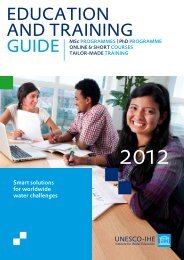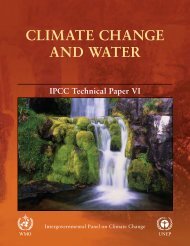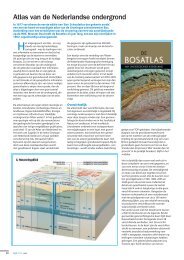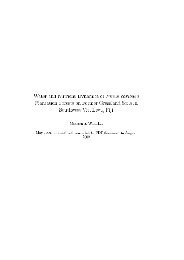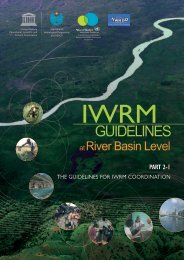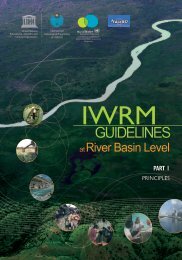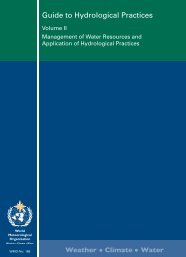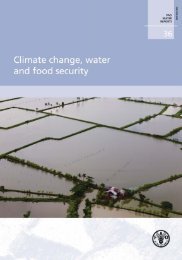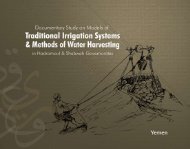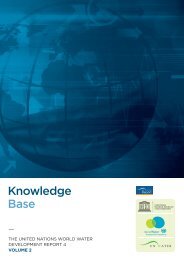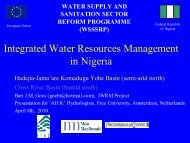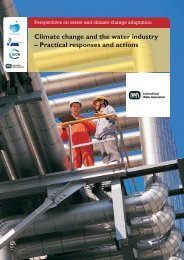Non-renewable groundwater resources: a ... - unesdoc - Unesco
Non-renewable groundwater resources: a ... - unesdoc - Unesco
Non-renewable groundwater resources: a ... - unesdoc - Unesco
- No tags were found...
You also want an ePaper? Increase the reach of your titles
YUMPU automatically turns print PDFs into web optimized ePapers that Google loves.
CHAPTER 2 ■ SOCIAL AND ECONOMIC DIMENSIONS OF NON-RENEWABLE RESOURCES●●●●●●Proactive government roleAbsolutely essential and must ensure appropriate cross-sector consultation for plan elaboration,implementation, evaluation and revision; needs to facilitate equitable ‘grass-root’stakeholder participation within an integrated policy framework that treats water as asocio-economic good.Organisational structurePartnership between government and stakeholder/social/non-governmental organisationsin overall aquifer management organisations for policy development, mobilization of investmentand other decision-making; provision of opportunity for social organisation intosmaller ‘nested’ groups for regular communication.Financing managementLevying some kind of ‘water resource abstraction fee’ will provide an important signal tousers and help generate the financial <strong>resources</strong> needed for effective user participation in<strong>groundwater</strong> resource administration, and demand and supply side management.Capacity buildingNecessary to ensure that the communities involved have access to appropriate education,technology and information for implementation – and the plan itself must address theinputs required and provide insight on ways to secure them.Accessibility of <strong>groundwater</strong> resource dataTo ensure transparency the aquifer management boundaries (both spatial and vertical)need to be well defined, and information on all relevant technical parameters (which determineaquifer storage, yield and quality risks) must be accessible in a ‘friendly format’.Demand management and water conservationAwareness campaigns and incentives to promote improved water-use efficiency, treatmentand recycling of wastewater, and constrain overall demand especially in relation to crop cultivation;promotion of a ‘water rights market’ could be considered as one possible instrumentin this regard.Inter-generational equityThe inter-generational distribution of benefits focuses on the improvement of social equity overtime. It should be a core requirement for successful planning of the mining of non-<strong>renewable</strong><strong>groundwater</strong> <strong>resources</strong>, and has the following indicators:● Improvements in well-being : the improvement of people’s well-being is a good indicator ofinter-generational social equity, and hence of the sustainability of the socio-economic developmentarising from <strong>groundwater</strong> resource mining, and the plan must define the relatedparameters and appropriate points for measurement.● Enhancement of ‘social capital’ : the evolution of capacity of stakeholders to cooperateeffectively on resource utilisation is another important indirect indicator of the potential forinter-generational distribution of benefits.● Opportunities to younger generations : an additional factor that needs to be taken intoaccount is the likelihood of younger generations having opportunities created by technologybreakthroughs that positively impact on the availability of alternative water supplies– amongst these developments advances in desalination technology (reducing desalinatedwater cost and environment impact) is likely to be the most significant for the more aridregions.31




